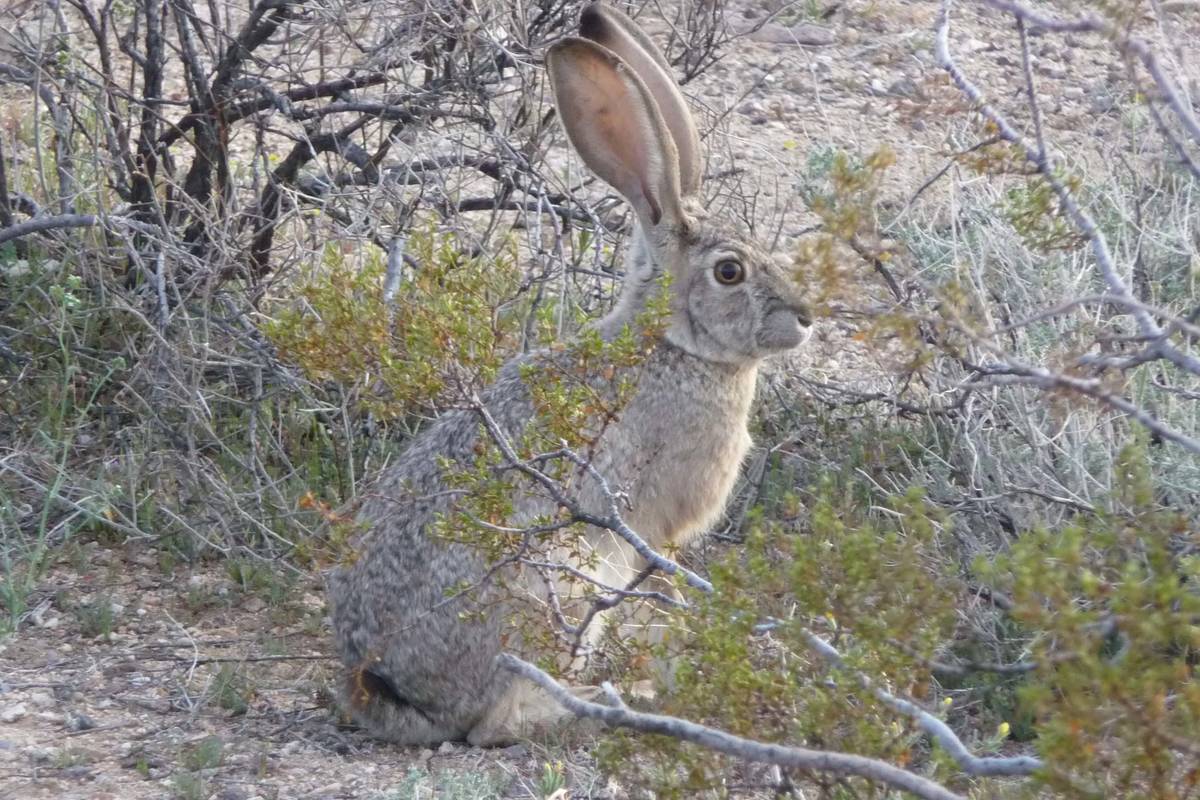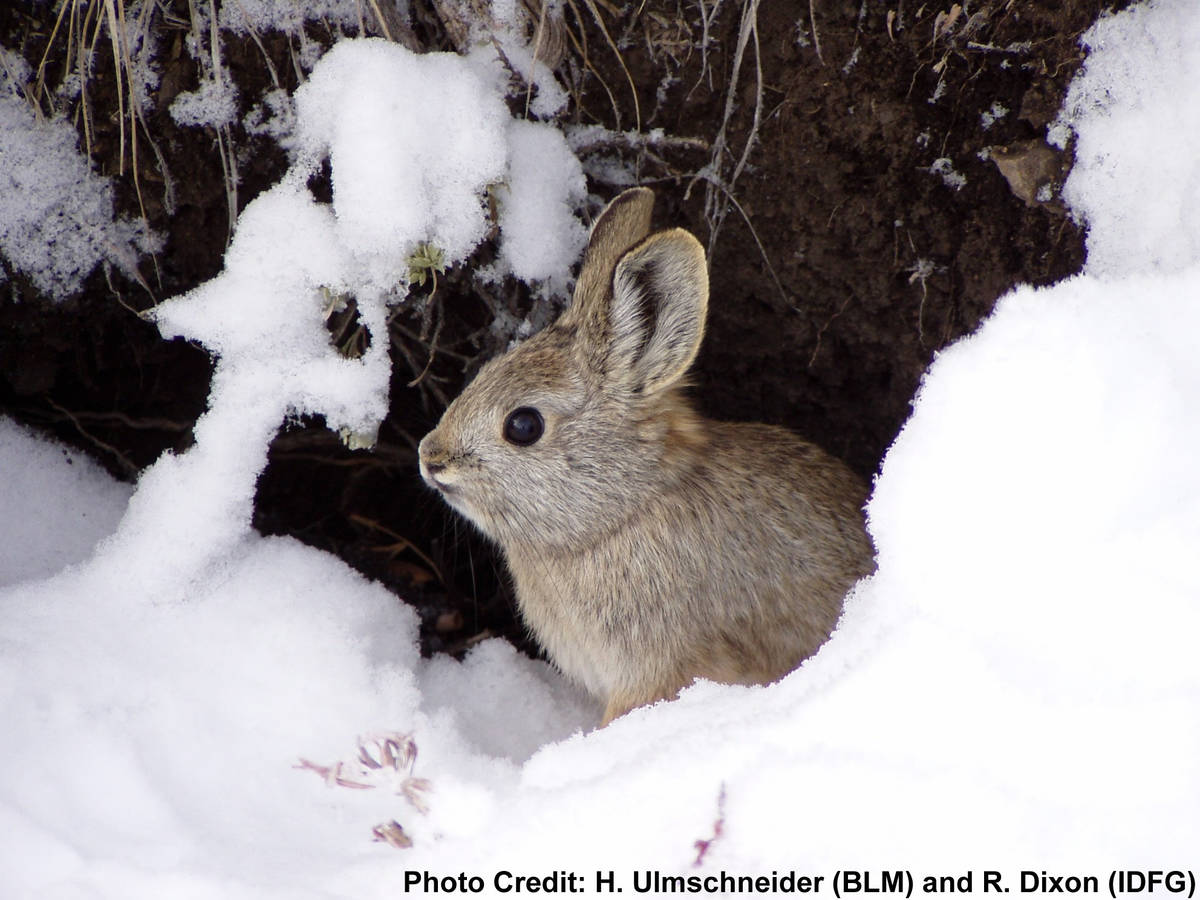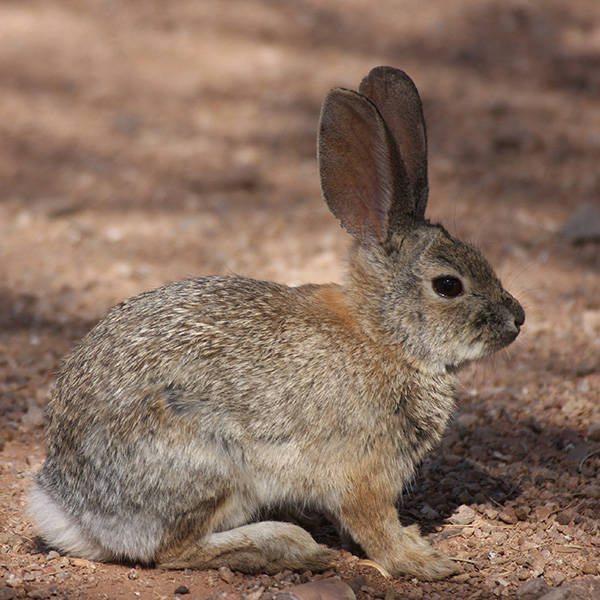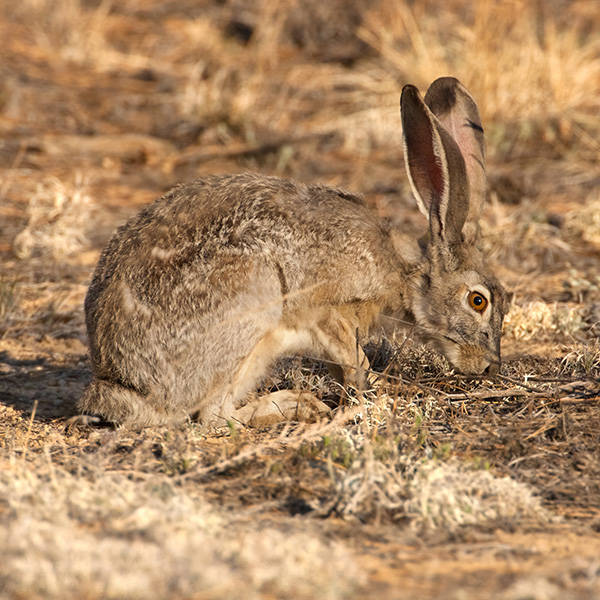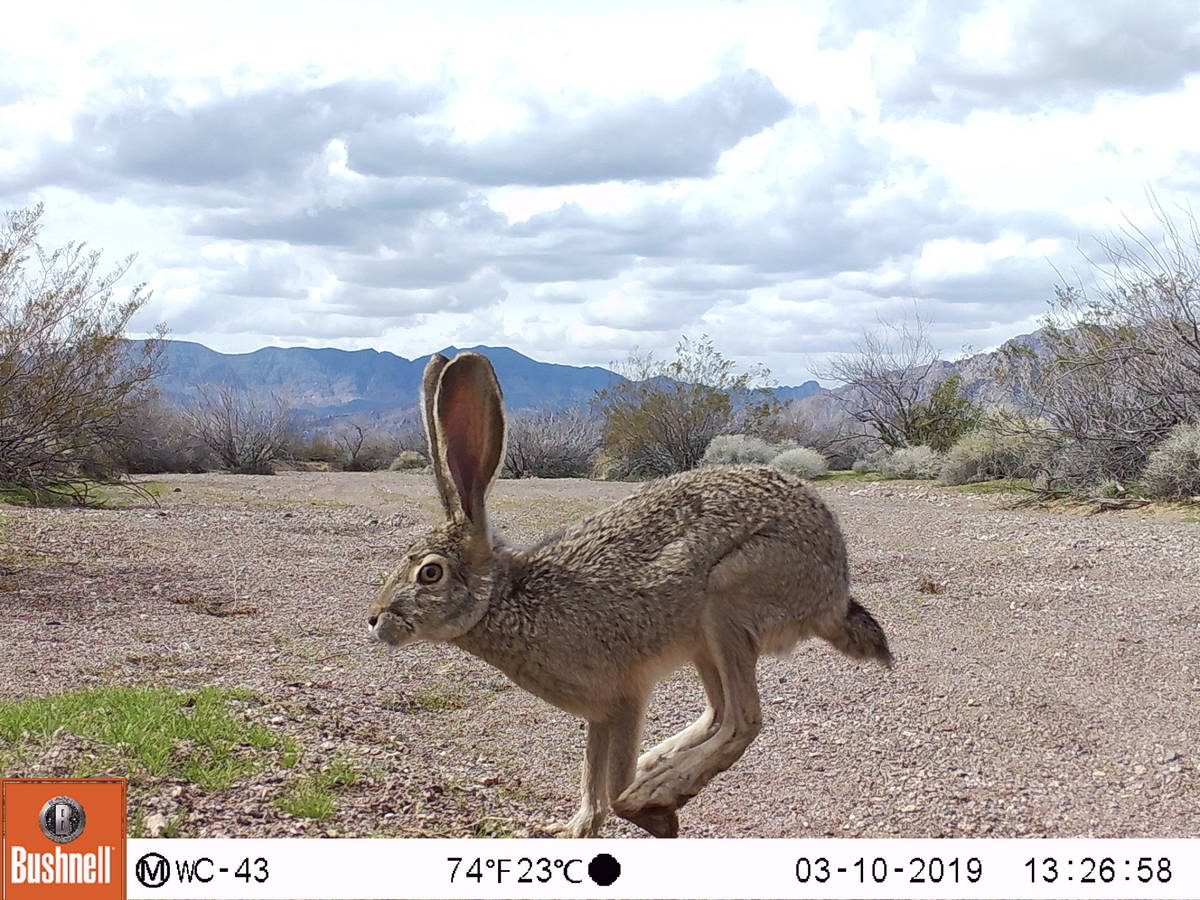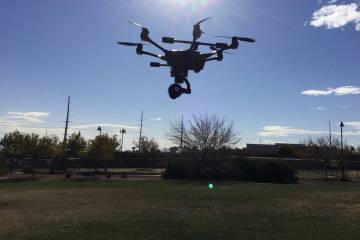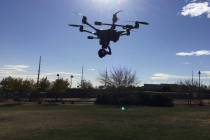Nevada’s wild rabbits also facing deadly virus, pandemic
As the coronavirus pandemic wreaks havoc on humans, another pandemic threatens rabbits in North America.
Rabbit hemorrhagic disease is spreading throughout the Southwest, and experts say it is beginning to infect Nevada’s wild rabbit populations.
The extremely contagious disease is a second permutation of the rabbit hemorrhagic disease virus, or RHDV2, and could devastate populations in the United States without intervention.
Nevada is lucky to have relatively robust wild rabbit populations — the species at greatest risk is the pygmy rabbit, which is not endangered — but states like California have populations of endangered riparian brush rabbits to worry about.
Experts say if the rabbit population is severely depleted, the effect would be like dominoes, disrupting the entire ecosystem.
Rabbits sit dead center in the food chain; as herbivores, they keep plants from growing out of hand, sometimes even depleting necessary foliage. Rabbits are also the primary food source for multiple carnivores all over the state. Loss of rabbits could cause carnivores to switch prey to endangered species such as the desert tortoise, or they could go extinct altogether.
Despite RHDV2 outbreaks in New Mexico, Arizona, Colorado, Texas and California, only one case has been confirmed in a wild rabbit found dead in Nevada in June. Nevada Department of Wildlife veterinarian Nate LaHue said the agency is collecting data and monitoring wild rabbit populations statewide.
“Because this is so new, there’s a lot we don’t know about how it’s affecting our North American species,” LaHue said. “In European rabbits, this disease can have upwards of 80 percent mortality, but we don’t know the mortality rate in either our jackrabbits or cottontails.”
Much of this data comes from the public. LaHue said if people find dead rabbits, they should leave the animals alone and call the Department of Wildlife to report the location. The presence of multiple dead rabbits in a small area is a red flag that an outbreak may have occurred.
Virus exists for decades
The original RHDV has existed for decades. In the 1990s, it was used deliberately to control rabbit overpopulation in Australia. Though instances popped up in Asia and Europe, the virus primarily affected only domestic rabbits. RHDV2, the new strain, began to infect and kill wild European hares in 2010.
The disease didn’t hit North America until 2019, when RHDV2 began to wipe out small clusters of domestic rabbits, all of which had been contained until now.
The first case in wild North American rabbits was reported in New Mexico in March.
The virus is still considered a foreign animal disease, so rollout of a vaccine for domesticated rabbits has been slow, according to Nevada state veterinarian Amy Mitchell. But a vaccine does exist and has seen success in Europe.
The vaccine has limited availability in the U.S. and would be complicated to distribute to wild rabbits, LaHue said. It’s not feasible to capture every rabbit, vaccinate it, keep it in captivity for a couple of weeks and then release it. Such measures would be limited to endangered species.
States and veterinary practices are monitoring the virus and preparing for infections, and most have protocols for domestic cases, including quarantine and thorough disinfecting of facilities, Mitchell said.
Rabbit owners can protect their pets by following USDA guidelines for care and virus prevention.
She said the greatest risk to domestic rabbits is the uncontrollable variable of virus transmission in the wild.
“There is some control with domestic rabbit owners that they can control what comes into their home and where their rabbits are housed,” Mitchell said. “It’s really critical that (rabbit owners) practice biosecurity because we don’t know yet how this will spread throughout the wild rabbit population.”
Rabbit research
Todd Esque, a research ecologist with the U.S. Geological Survey, has been studying wild rabbit ecology in Southern Nevada for two years and is preparing to study the ecological impact of what he and other scientists believe to be an inevitable outbreak.
“We have very little data from the field about how (the virus) is moving and how many animals survive,” Esque said.
Most of the information available is anecdotal, he said, from isolated cases that pop up around the Southwest.
Esque is monitoring how the rabbits themselves move around and interact with each other, which will show how the disease could spread across the country. Having already collected two years of data, he will be able to compare how the population might change, either in behavior or numbers, when an outbreak hits.
Prevent human spread
LaHue said the state’s priority is to prevent human spread of the virus. Because it can survive for weeks on surfaces, RHDV2 can spread easily via boots from hikes and game brought home from hunting trips.
“The virus that causes the disease is incredibly robust, it can last over a month or more in the landscape under the right conditions, it can survive on boots, clothing, equipment,” LaHue said. “We want to avoid people spreading (the virus).”
The virus can’t infect other animals, including humans, dogs and cats, but cleaning equipment and disposing of carcasses properly will prevent local infection and disease spread. LaHue recommended cleaning hiking boots and hunting equipment with diluted bleach before and after going out.
The USDA and state departments of wildlife post updated reports on locations with known cases of RHDV2, so hikers, campers and hunters can monitor whether they may be exposing a vulnerable population or may bring the virus home.
Beyond trying to prevent human-caused spread, we may have to hope that rabbit populations will be able to bounce back from the virus on their own, according to Esque, especially if the virus is less severe than scientists expect.
“Having a natural resistance would be a best-case scenario, because we would lose fewer from the get-go,” Esque said. “That would be the least detriment to our native systems.”
Marina Philip is a 2020 Mass Media reporting fellow through the American Association for the Advancement of Science. Email her at mphilip@reviewjournal.com. Follow her on Twitter at @mureeenuh.



